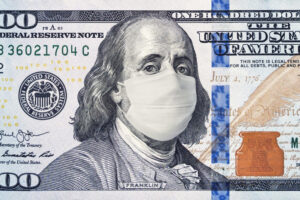 On Wednesday, March 25, 2020—after days of debate—Congress agreed to a $2 trillion economic relief package designed to provide financial assistance to Americans and their families, and billions of dollars in loans for businesses. Voting is expected midday. The package is the largest fiscal stimulus in modern U.S. history and is the government’s most recent response to coronavirus disease 2019 (COVID-19).
On Wednesday, March 25, 2020—after days of debate—Congress agreed to a $2 trillion economic relief package designed to provide financial assistance to Americans and their families, and billions of dollars in loans for businesses. Voting is expected midday. The package is the largest fiscal stimulus in modern U.S. history and is the government’s most recent response to coronavirus disease 2019 (COVID-19).
What is included in the stimulus package?
While the final bill has yet to be released, there have been some publicly debated points. The economic rescue package includes a plan to provide two waves of direct financial assistance to Americans, a plan to stabilize the airline industry, a plan to provide small businesses with funds and a plan to issue loan guarantees to other hard-hit sectors in the economy. The package also includes provisions to extend unemployment insurance, increase funding for Medicaid and add additional assistance for small businesses throughout the country.
“This is not a moment of celebration, but one of necessity.”
Sen. Chuck Schumer
Direct Financial Assistance to Americans
The stimulus package would provide two waves of direct payments to all Americans, coming weeks apart. American adults making up to $75,000 would receive $1,200 each and $500 per child. Married couples earning up to $150,000 would receive $2,400. Adults making more than $75,000 but less than $99,000 would receive less, and adults making more than $99,000 would not receive any government financial assistance.
Stabilizing the Economy
The economic relief package proposal includes the following funds to stabilize various sectors of the economy:
- Airline industry: $50 billion
- Small businesses lending program: $350 billion
- Hospitals: $130 billion
- State and local governments: $150 billion
What’s next?
The economic relief package has been agreed to by Congress, but not yet passed. We will continue to monitor the situation for developments and provide updates.



